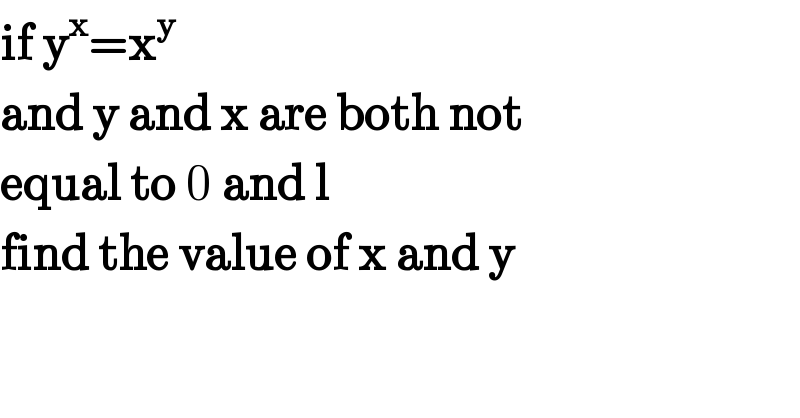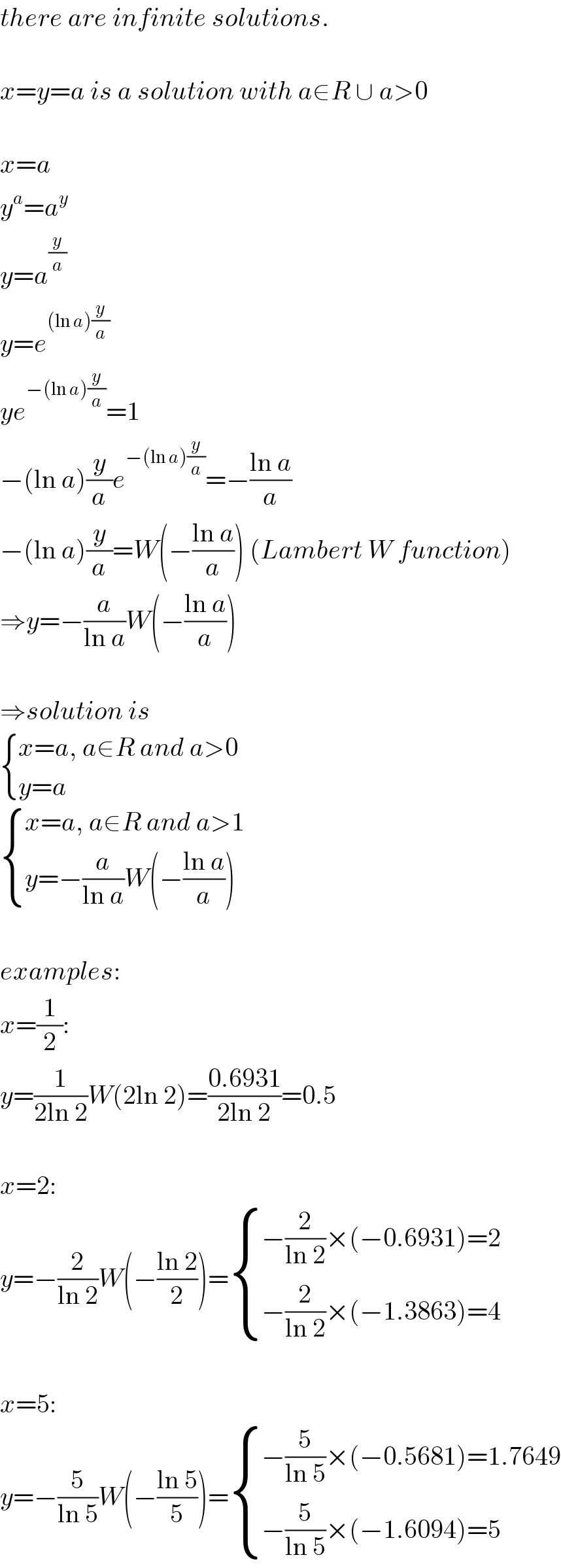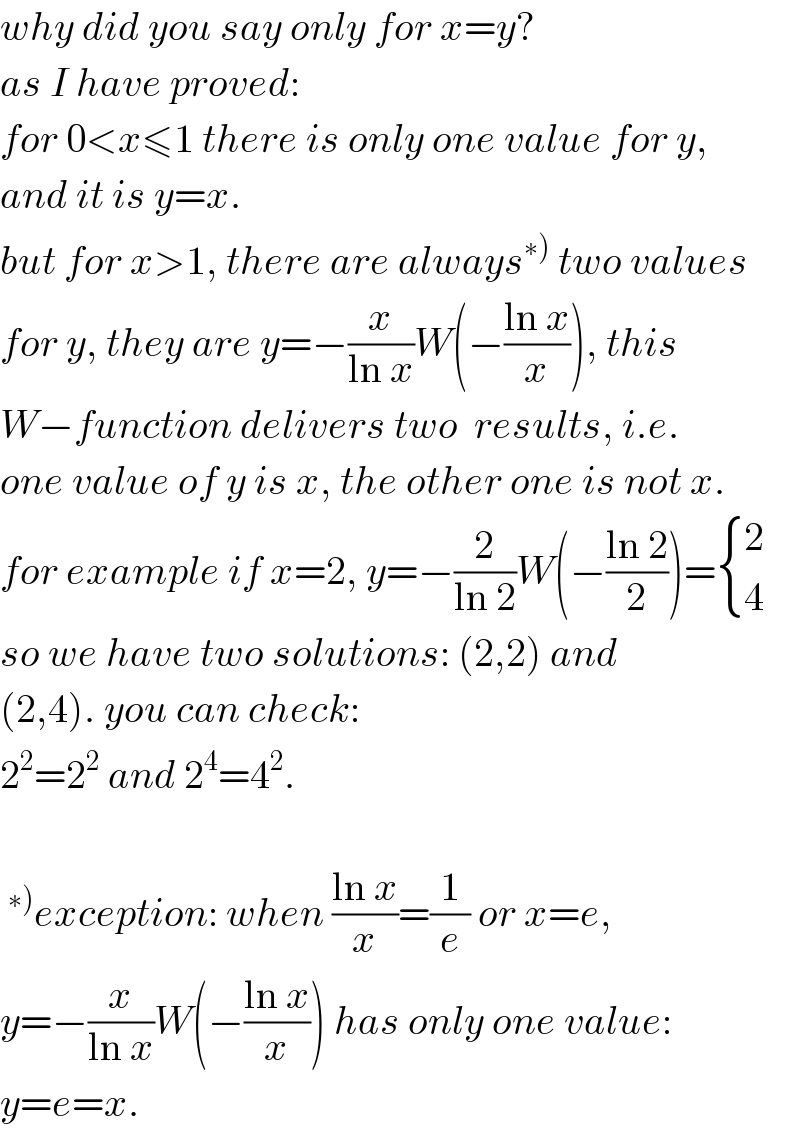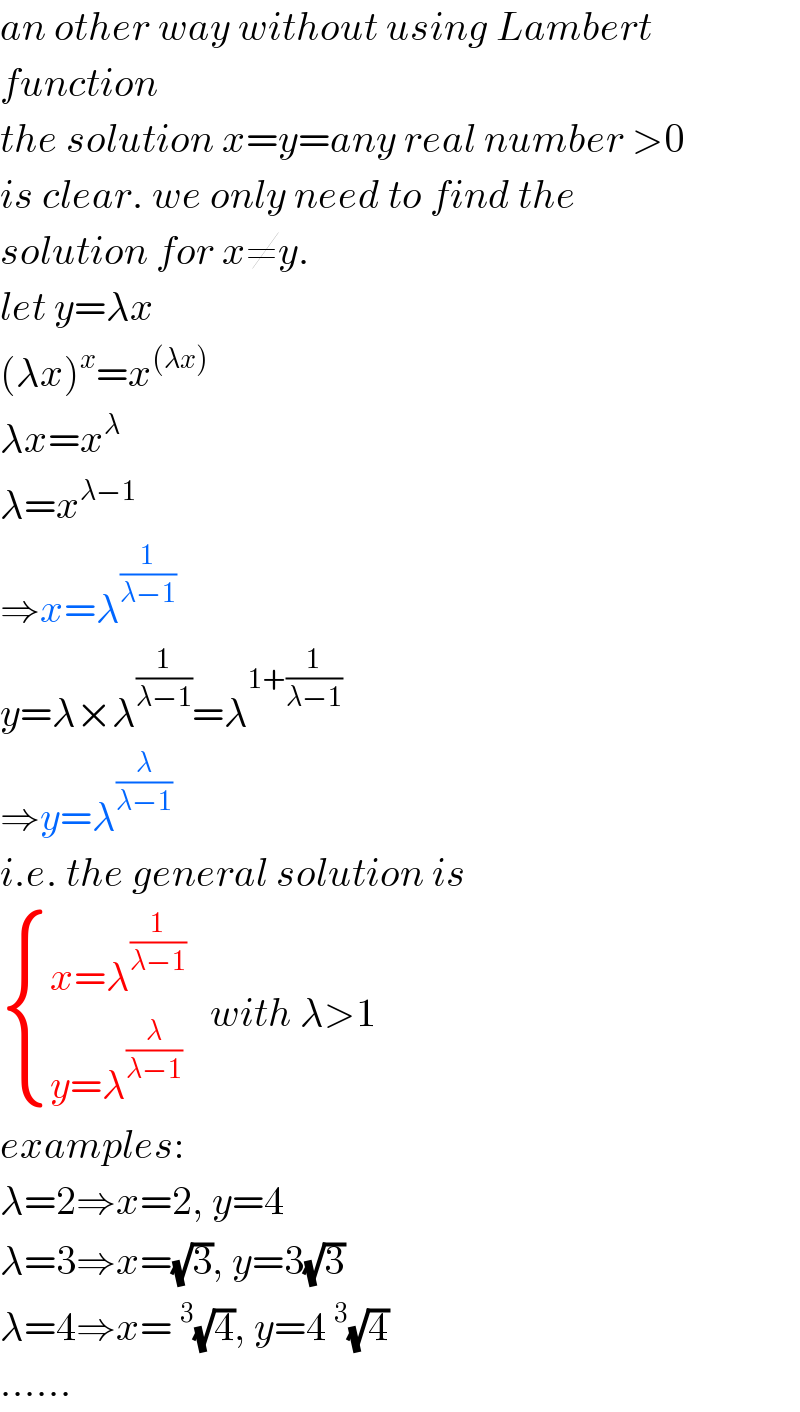
Question and Answers Forum
Question Number 50064 by mondodotto@gmail.com last updated on 13/Dec/18

Answered by Necxx last updated on 13/Dec/18

Answered by mr W last updated on 14/Dec/18

Commented by Pk1167156@gmail.com last updated on 14/Dec/18
you are right sir.
Commented by Pk1167156@gmail.com last updated on 14/Dec/18
but only for x=y
Commented by mr W last updated on 14/Dec/18

Commented by mondodotto@gmail.com last updated on 14/Dec/18

Answered by mr W last updated on 15/Dec/18

